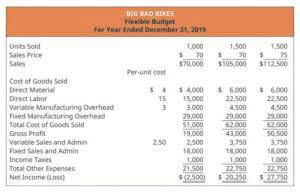
Timely financial reporting, improved cash flow management, accurate financial analysis, compliance with accounting standards, and improved efficiency are some of the benefits of proper posting dates. Therefore, businesses should ensure that they have a proper posting date policy in place to reap the benefits of accurate bookkeeping. Companies should ensure that they have a system in place to accurately record posting dates, and that all transactions are recorded in the correct period. By following these best practices, businesses can ensure that their financial records are accurate posted meaning in accounting and up-to-date.
- To eliminate posting, a legacy accounting system would need to be completely redesigned.
- Regular entering of the documents into the accounting system gives you better insight into the state of the finances of the company.
- Financial statements are prepared at the end of each accounting period to understand the earnings and financial position of the business concern.
- These differences can create a labyrinth of mismatched entries, making it difficult for accountants to ensure that all transactions are accurately recorded and accounted for.
- This ensures transactions are classified correctly and speeds up posting.
- An accounting posting is the transfer of entries in the subsidiary books of account or journals to the appropriate general ledger accounts and is part of the double entry bookkeeping system.
What is the Difference Between a Journal and a Ledger?
This is the date on which the transaction actually occurred, whether it was a sale, a purchase, or some other type of financial activity. Using the transaction date as the posting date ensures that your books accurately reflect the timing of your business activities. There are several types of transaction dates that can be used depending on the nature of the transaction.
- Modern computerized accounting systems perform the posting process automatically as soon as an entry is made in the journal.
- However, it may not be the best option for businesses that have a delay between the transaction and the payment.
- However, if the invoice is not posted until several days later, the cash flow forecast for that period may be inaccurate.
- It’s a crucial step where journal entries are transferred to the general ledger.
- Instead, all information is directly stored in the accounts listed in the general ledger.
- Understanding transaction dates and their role in posting dates is essential for accurate financial reporting.
- For example, if a payment is due on January 15, but the payment was received on January 20, the cash flow and the financial statements will be affected.
What is posting invoices?
- The form of conducted activity determines if it is a simplified accountancy system or full accounting compliant with the International Financial Reporting Standards (IFRS).
- For example, if you sold a product on June 1st, you would typically use that date as the posting date for the transaction.
- The balances of the general journal and various sub-ledgers are to be transferred at various intervals, ranging from daily to yearly.
- If the financial statements are not accurate, it can lead to incorrect decisions being made.
- The closing date is the date when the financial statements are closed for a specific period, such as a month or a year.
- As we have discussed in previous sections, posting dates play a crucial role in accurate bookkeeping.
He has worked as an accountant and consultant for more than 25 years and has built financial models for all types of industries. He has been the CFO or controller of both small and medium sized balance sheet companies and has run small businesses of his own. He has been a manager and an auditor with Deloitte, a big 4 accountancy firm, and holds a degree from Loughborough University.

What is Posting in Accounting? Ensuring Accurate Ledgers
In this section, we will discuss the benefits of proper posting dates and how it can help businesses in financial decision-making. They ensure that financial statements are reliable and consistent, which is essential for making informed decisions. Inaccurate posting dates can cause confusion and errors in financial reporting, leading to incorrect financial statements and potential legal consequences. In this section, we will dive deeper into the importance of accurate posting dates in financial reporting and explore different perspectives on this topic. When it comes to choosing the best option for posting dates, it is important to consider the purpose and significance of each type. The transaction date is important in determining the timing of the financial transaction, while the posting date is important in determining the accuracy of the financial records.

Before the process of posting the invoice, you have to check the accuracy and correctness of the document. This applies to all types of invoices, no matter if there are any known mistakes in them. You should make sure you have ordered any products or services shown on the invoice. If any products are shown on the invoice, that haven’t been ordered, you should contact the seller and clarify the matter of the badly issued invoice.

The debit balance increases the asset, whereas the credit balance increases the liability in the accounts. Various accounts and transactions are to be recorded in their respective ledgers. There are two types of journal entries, simple journal entry and compound journal entry. Posting invoices significantly facilitates the fulfillment of all tax obligations. To generate a statement one can use an accounting program to generate statements easily. But not only accounting systems contain the data needed to prepare tax declarations.

Different types of posting dates in bookkeeping
The posting date is important in determining the accuracy of the financial records, as it reflects the timing of the transaction in the books. As business transactions occur during the year, they are recorded by the bookkeeper with journal entries. After an Bookkeeping for Veterinarians entry is made, the debit and credit are added to a T-account in the categorized journal. At the end of a period, the T-account balances are transferred to the ledger where the data can be used to create accounting reports. The distinction between these dates becomes particularly important during the reconciliation process. Discrepancies between the invoice date and the posting date can lead to challenges in matching payments with invoices, potentially causing confusion and errors in financial records.

